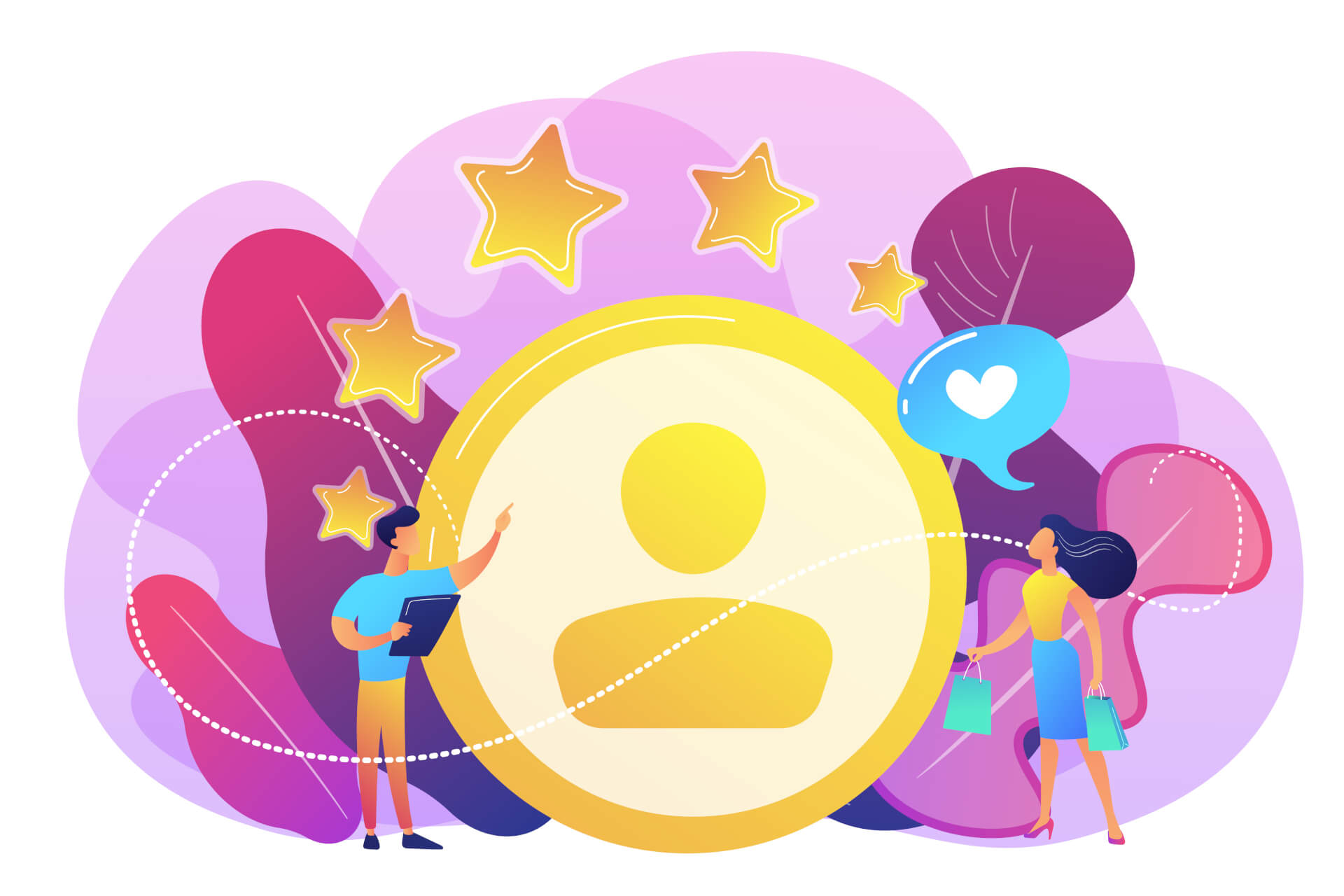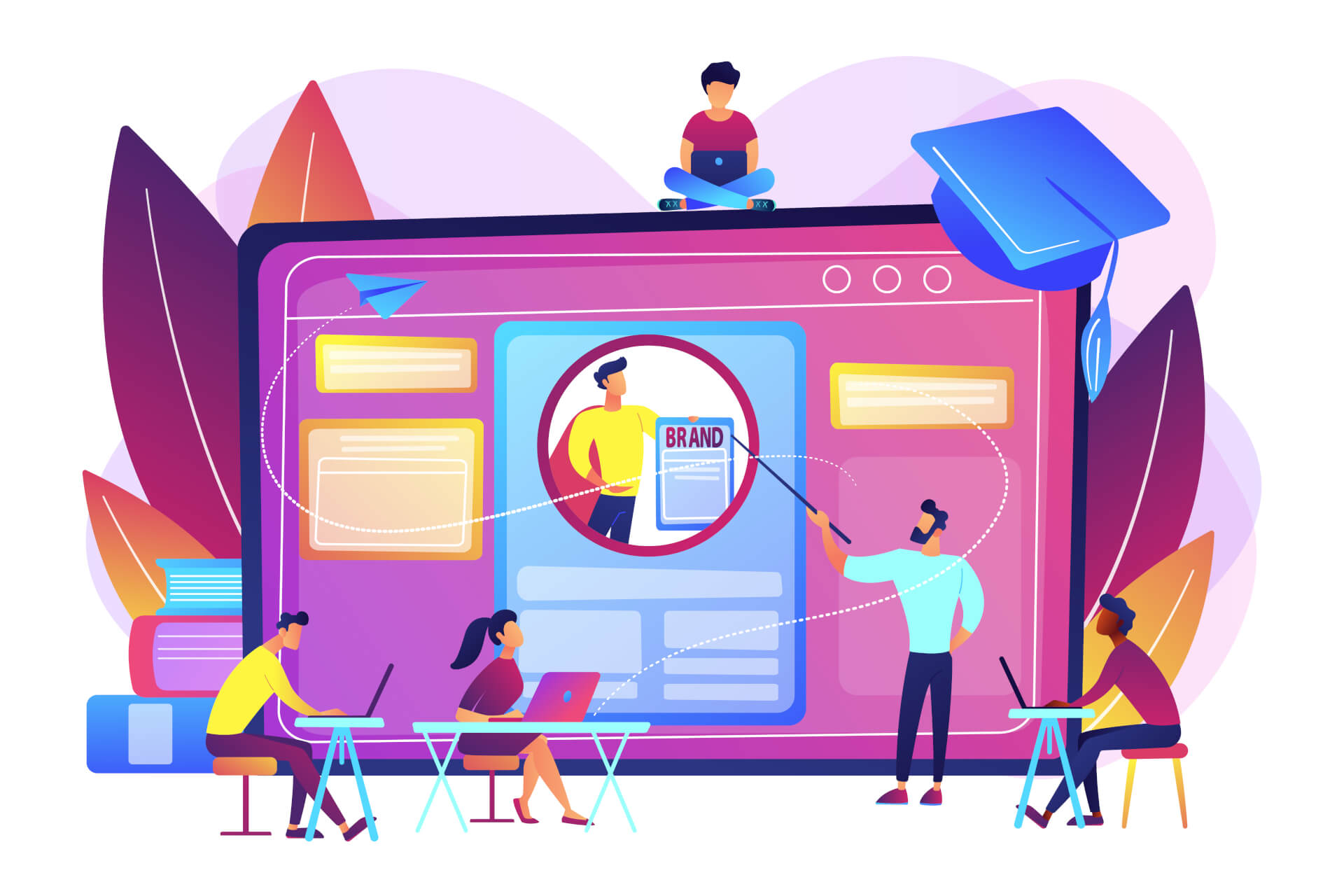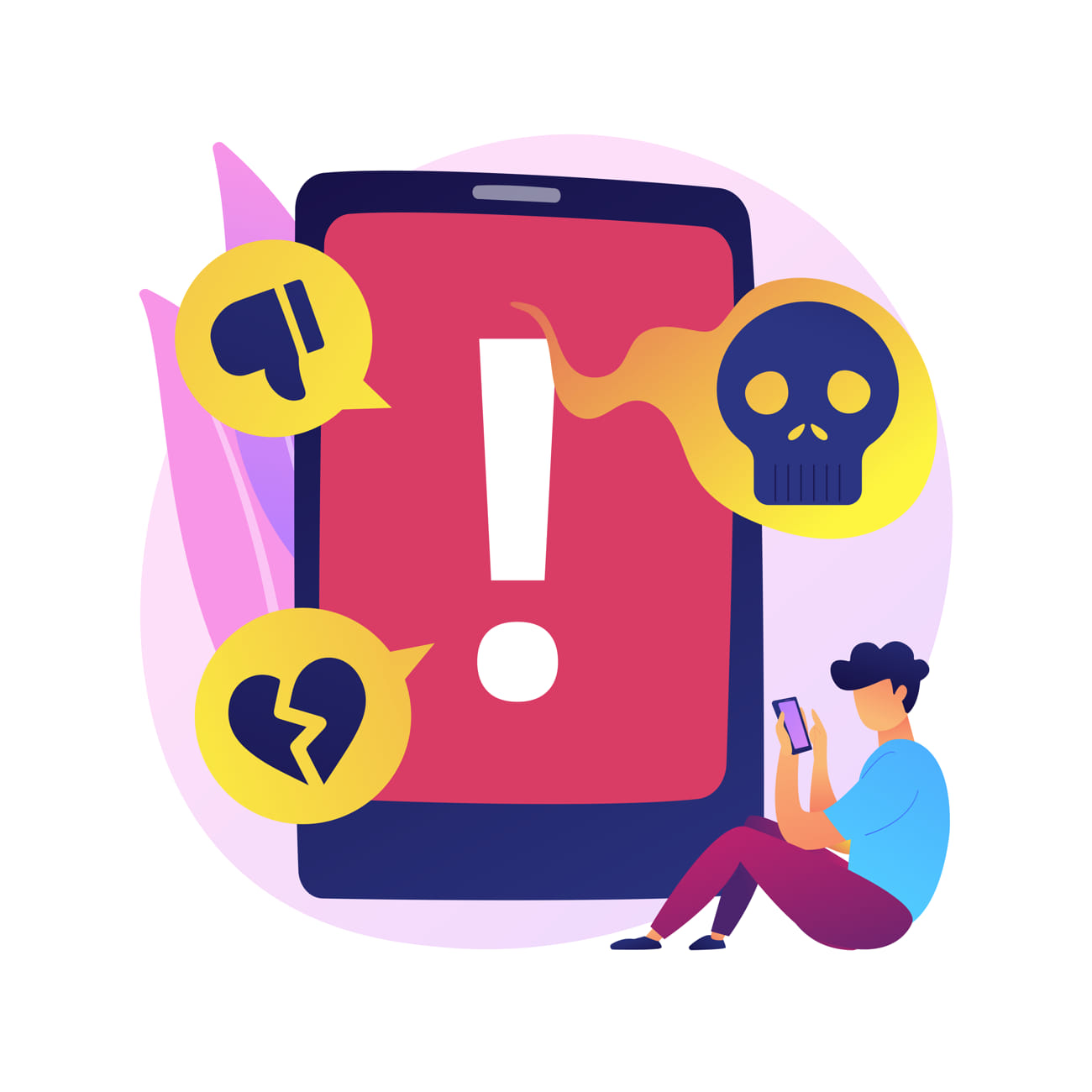Collecting customer feedback is essential to building a profitable business.
The background is explained quite simply. Because if you don't know what your customers think of your brand or products, you don't know when you're falling short of expectations and requirements. At the same time, you don't know why certain customers are happy with your company, nor who those customers are.
Knowing what your customers think of your brand gives them important insights that can point you in the right direction to be more successful and improve customer satisfaction and loyalty.
Don't forget: Loyal customers are your bread and butter. While seasonal boosts of new customers or campaigns can give a good accelleration to success, it is the returning customers who fill your coffers in the long term.
 The longer you convince customers of your brand, the more valuable they become for you. Achieving even a small 5% improvement in customer retention rate increases profits by 25% to 95%. On average, it costs 5 to 25 times more to acquire new customers than to satisfy existing customers.
The longer you convince customers of your brand, the more valuable they become for you. Achieving even a small 5% improvement in customer retention rate increases profits by 25% to 95%. On average, it costs 5 to 25 times more to acquire new customers than to satisfy existing customers.
Table of Contents
- The importance of customer feedback
- How to collect customer feedback
- 1: Ask for feedback
- 2: Categorize your answers
- 3: Act on the information received
- 4: Contact your customers after implementing the points
- Automatically collect customer feedback with Callexa
The importance of customer feedback
 Customer feedback is important and has many benefits, regardless of the industry or whether you want to use the feedback in marketing or product development.
Customer feedback is important and has many benefits, regardless of the industry or whether you want to use the feedback in marketing or product development.
Above all, it helps you to increase customer satisfaction. A satisfied customer is a loyal customer who not only makes more sales, but also relieves you of part of the advertising costs.
Personal recommendations are one of the most important factors in a customer's purchase decision.
Of course, ratings on social media or other rating platforms also help a lot, but a recommendation from friends and family has a very special influence on a customer's purchase decision.
By building loyal customers now, you generate future returns right in your pocket.
But the other side is also important, looking at the feedback from critics is also very valuable to further improve your service.
Because increasing usability, responsiveness, and enjoyment goes a long way to making customers happy. This gives you important information about which factors lead to fewer conversions, which is why customers abandon trials or even entire purchases.
Additionally, both praise and criticism can help you customize products to meet your customers' needs. If your customers don't want or need what you're offering, you won't increase sales.
While you don't have to make every change, it's still important to know and understand your customers' expectations.
Next, customer feedback is one of the best ways to measure how your customers found you. Knowing where your customers are coming from will help you focus your efforts on your most successful channels. At the same time, you can save efforts to advertise on sterile channels.
Soliciting—and acting on—customer opinion is a crucial, and unfortunately often underestimated, step in making customers feel important and heard. This is crucial in determining your customer success strategy.
 Recommended reading: NPS feedback is not only important for consumers. Our blog article answers the question: "Why you should also use the Net Promoter Score for your B2B company."
Recommended reading: NPS feedback is not only important for consumers. Our blog article answers the question: "Why you should also use the Net Promoter Score for your B2B company."
How to collect customer feedback
 There are several ways to collect customer feedback, the easiest way is to create an NPS - Customer Satisfaction Survey.
There are several ways to collect customer feedback, the easiest way is to create an NPS - Customer Satisfaction Survey.
But surveys via onsite, pop-up, or app that you place at the various touchpoints of the customer journey are also very helpful in obtaining valuable customer feedback.
Then, if you want to not just collect that data, but actually use it effectively, it's time to take a closer look at the customer feedback loop.
The premise behind it is very simple:
- Ask for feedback at a relevant touchpoint, such as after signing up or making a purchase.
- Categorize the answers received to get a better overview and to be able to identify important points directly.
- Act on the information received and make the necessary changes/improvements.
- After you've implemented the points, contact your customers to show them you've been listening.

1: Ask for feedback
Asking for feedback seems pretty easy, since the target customer is only supposed to answer a few questions. However, the question and number of questions are decisive for the willingness of the customer to take part in the survey at all.
Therefore, direct your questions towards specific goals. For example on:
customer satisfaction
A key objective may likely be that you want to gain insight into customer satisfaction trends. This process begins by asking how satisfied customers are with your product or service today so that you have a benchmark for future reference.
Aside from monitoring your social media accounts, there are two main ways to gain insights into customer satisfaction.
There are 2 proven methods for measuring customer satisfaction.
First, with the help of the Net Promoter Score (NPS), which measures how likely it is that a person will recommend your product or service.
The second method of measuring customer satisfaction is the CSAT (Customer Satisfaction Score). This metric examines how satisfied a customer is with a single interaction with your company.
While the CSAT only takes a snapshot, the NPS can also measure customer loyalty in addition to general satisfaction, because promoters often have a higher customer lifetime value (CLTV) than detractors.
Calculating NPS manually can not only be difficult, it also takes you a lot of time. This is exactly where the use of NPS survey tools such as Callexa proves their worth.
Customer Service Concerns
You may also want to collect customer feedback on service issues and vulnerabilities. These questions focus on your team's performance rather than your product.
To get to the root of the problem, you can ask a combination of open and closed questions, such as:
- How satisfied are you with your service on a scale of 1-10?
- How was our service today?
- How was your experience with our customer service representative?
- Is there anything we can do to improve your experience?
Again, it's a good idea to use the Net Promoter Score survey to get a sense of your customers' experiences. A high score usually indicates a well-established customer service team.
On the other hand, a low score may indicate that there are issues in the department that you need to look into.
The CSAT is again helpful for the selective survey. You can start by asking how satisfied your customer was after an interaction with the support agent.
If necessary, you can then ask specific questions such as:
- How long it took to solve the problem
- Specific questions about the interview
- The helpfulness of a particular customer service representative.
The key is to send your survey immediately after completing a support ticket, live chat, or phone call. It will improve your response time - and reduce customer feedback bias.
improvement of your products
Improving your products should be a constant goal in your company. Targeted customer feedback can help you achieve this goal.
Again, there are a variety of ways to collect your data.
The NPS also proves to be very practical for this. Although product-specific issues aren't directly addressed with the NPS core question, it's great if you inquire about the likelihood of the product being recommended to others.
You can obtain more detailed information via additional questions such as:
- What added value does our product offer your company?
- Did our product or service deliver its intended value?
- Having trouble using our product or related features?
- What features is our product missing that you urgently need?
 Reading recommendation: In addition to asking the right question, the recipient of the survey is also important. Our blog article answers the question: "Who should you ask in B2B business: your contact person or the user of the product?"
Reading recommendation: In addition to asking the right question, the recipient of the survey is also important. Our blog article answers the question: "Who should you ask in B2B business: your contact person or the user of the product?"
2: Categorize your answers
Now that you have your customer feedback at hand, it's important to categorize it in a meaningful way. Otherwise, you've just collected tons of data spread across various Excel spreadsheets.
Customer feedback is information. Start by breaking down your customer feedback into three main categories.
Product Feedback - any information related to your products and services. You can further break down this data into major and minor product defects, feature requests, and satisfaction points.
Customer Service Feedback - any data you collect about customer relationships with your representatives.
You can use this information to identify patterns such as:
- frequently asked Questions
- areas of clarification
- Average response times in specific media
- Customer Pain Points
Marketing and sales feedback is all feedback related to the marketing and sales process. By providing a tight feedback loop for your marketing and sales teams, you can avoid problems like broken promises and missed deadlines. Your goal here should be to build efficiency—and avoid dissatisfied customers.
3: Act on the information received
Once you've categorized all of your customer feedback, it's time to act on your newfound knowledge. Assembling your data in a way that's useful across your diverse teams is critical.
Then you would like to pass on your information to the following departments / areas in your company:
- Your product/research and development teams
- Your customer support team
- The marketing and sales teams
- Relevant management teams
Whether you share this data weekly, monthly, or quarterly, every team needs access to the information that can help them improve.
4: Contact your customers after implementing the points
Responding to customer feedback goes a long way in improving your business. Because if you want to keep an eye on your customer relationships, it is important to stay in touch with your customers.
Unfortunately, a majority of customers don't leave feedback simply because they think the company doesn't care what they have to say.
By telling and showing your customers that you value their feedback—both positive and negative—you increase the chances that they'll share not only the positive things with you, but the negative ones as well.
Please note the following:
- Immediately let customers know that you have received the feedback and will take it into account
- Post regular updates on how you've implemented customer feedback.
- Personalize email replies to target customers who have shared their thoughts and concerns.
- Reach out to customers with specific criticisms as soon as the issues are resolved.
- With this you build strong and long-lasting relationships with your customers and can turn critics into supporters of your brand.
Automatically collect customer feedback with Callexa
Start collecting customer feedback today. Callexa makes it easy and automated. Your first satisfaction survey can be created in just a few minutes. Convince yourself of the simplicity and quality of the surveys with the permanently free Callexa tariff "Free", with which you can carry out up to 50 surveys per month.
If you have any questions about Callexa or the customer satisfaction surveys based on NPS, we are at your disposal and look forward to hearing from you.

Recommended reading: If this article helped you and you would like to learn more about the role of NPS in shaping the customer experience, continue reading here: "The role of NPS in customer experience (CX)"